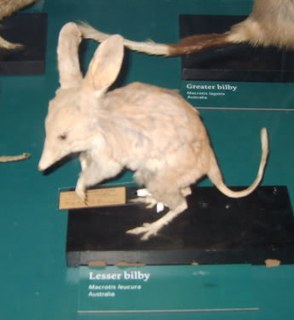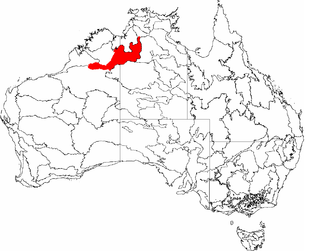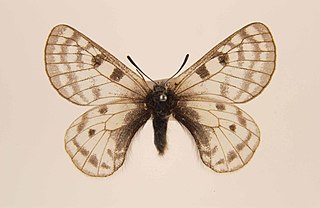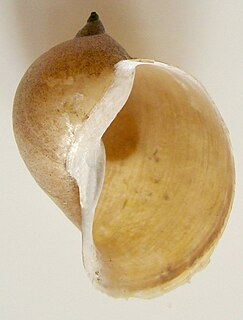Collier Range National Park is a national park in the Pilbara region of Western Australia, 878 km (546 mi) northeast of Perth.

Macrotis is a genus of desert-dwelling marsupial omnivores known as bilbies or rabbit-bandicoots; they are members of the order Peramelemorphia. At the time of European colonisation of Australia, there were two species. The lesser bilby became extinct in the 1950s; the greater bilby survives but remains endangered. It is currently listed as a vulnerable species. It is on average 55 cm (22 in) long, excluding the tail, which is usually around 29 cm (11 in) long. Its fur is usually grey or white, it has a long pointy nose and very long ears, hence earning its nick-name, the rabbit-eared bandicoot.

The greater bilby, often referred to simply as the bilby since the lesser bilby became extinct in the 1950s, is an Australian species of nocturnal omnivorous animal in the order Peramelemorphia. Other vernacular names include dalgyte, pinkie, or rabbit-eared bandicoot. Greater bilbies live in arid parts of northwestern and central Australia. Their range and population is in decline.

The lesser bilby, also known as the yallara, the lesser rabbit-eared bandicoot or the white-tailed rabbit-eared bandicoot, was a rabbit-like marsupial. The species was first described by Oldfield Thomas as Peregale leucura in 1887 from a single specimen from a collection of mammals of the British Museum. Reaching the size of a young rabbit, this species lived in the deserts of Central Australia. Since the 1950s–1960s, it has been believed to be extinct.

The golden bandicoot is a short-nosed bandicoot found in northern Australia. It is the smallest of its genus.

The Dryandra Woodland is a national park in Western Australia within the Shires of Cuballing, Williams and Wandering, about 164 kilometres south-east of Perth and 22 kilometres north-west of the town of Narrogin. It is a complex of 17 distinct blocks managed by the Western Australian Department of Parks and Wildlife and spread over approximately 50 kilometres separated by areas of agricultural land. The area is considered to be one of the state's major conservation areas, and although it is far from pristine due to its history of logging operations, a number of species of threatened fauna are rebuilding populations through the removal of introduced predators such as foxes and feral cats.

The Ord Victoria Plain, an interim Australian bioregion, is located in the Northern Territory and Western Australia, comprising 12,540,703 hectares.

Parnassius simonius is a high-altitude butterfly which is found only in the Pamir Mountains of Central Asia. The type locality is Aram-Kunghei, Zaalaisky Mountains, Kyrgyzstan. It is a member of the snow Apollo genus (Parnassius) of the swallowtail family, Papilionidae.

Radix is a genus of air-breathing freshwater snails, aquatic pulmonate gastropods in the family Lymnaeidae, the pond snails.

Ampullaceana ampla is a species of air-breathing freshwater snail, an aquatic pulmonate gastropod mollusc in the family Lymnaeidae, the pond snails.

Malaxis, commonly called adder's mouth, is a genus of terrestrial and semiepiphytic orchids. The generic name signifies "smooth" and alludes to the tender texture of the leaves. There are approximately 182 species, found mostly in tropics but with some species in temperate regions.
Parasyntormon is a genus of flies in the family Dolichopodidae. It is closely related to Syntormon, and was formerly considered a synonym of it.

Anthospermeae is a tribe of flowering plants in the family Rubiaceae and contains 208 species in 12 genera. Its representatives are found in the Southern Hemisphere, with the exception of the two species of the genus Phyllis. At least two genera, namely Coprosma and Galopina are anemophilous.

Johann Daniel Wilhelm Hartmann was a Swiss painter, engraver and malacologist.
The Ngururrpa Indigenous Protected Area, covering an area of 29,000 square kilometres (11,000 sq mi) in the far eastern area of the Pilbara region, in the Great Sandy Desert of Western Australia, was declared in October 2020. It includes all of the land included in the Ngururrpa native title area, as determined in 2007.
Lagotis is a genus of flowering plants belonging to the family Plantaginaceae.

Ampullaceana is a genus of gastropods belonging to the family Lymnaeidae.












